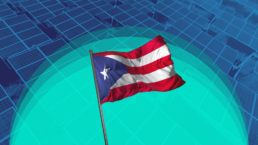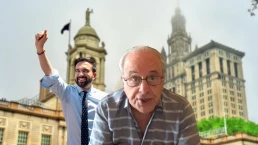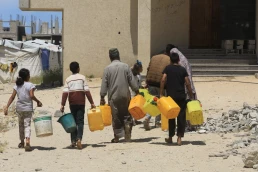Kristoffer Tigue, Inside Climate News
Eddie Ramirez has never understood why his government doesn’t more aggressively pursue renewable energy.
When Hurricane Maria swept across Puerto Rico in September 2017, shredding the energy grid and knocking out power for nearly all the island’s 3.4 million residents for months on end, Casa Sol—Ramirez’s five-bedroom bed and breakfast—was one of the only buildings in San Juan with working electricity, with 30 solar panels bolted to its roof.
When a large fire this June at an electrical substation in San Juan plunged more than 800,000 Puerto Rican homes into darkness and knocked out power to another 330,000 the following week, Casa Sol’s lights stayed on, even as its neighbors lost power.
And when a series of equipment failures and poor maintenance led to cascading power outages across the island in August, September and October, leaving hundreds of thousands of Puerto Ricans without electricity for days at a time and prompting calls for Puerto Rico Gov. Pedro Pierluisi to resign, Ramirez and his solar-powered hotel carried on, business as usual.

“We don’t even know when it happens,” Ramirez said of the blackouts, which have become a daily part of life for many Puerto Ricans since June, when the private company LUMA Energy took over the island’s electricity transmission system.
With Puerto Rico’s grid still in shambles four years after Maria’s landfall, and $12.4 billion in federal aid earmarked to help repair the territory’s electrical systems and jumpstart its economy, many Puerto Ricans, like Ramirez, see a once-in-a-generation opportunity to reimagine the island’s tattered power system as a modern grid powered by clean energy and far better at withstanding the worsening threats of the climate crisis.
But many Puerto Ricans worry their political leaders are squandering that opportunity by planning to rebuild the electricity grid with natural gas power plants that continue to emit greenhouse gases and feed lengthy transmission lines that are vulnerable to natural disasters.
Recent Posts
“Arrest Now, Ask Questions Later”: Why Did L.A. ICE Agents Arrest and Jail U.S. Citizen Andrea Velez?
July 3, 2025
Take Action Now “They didn’t have vests that said ICE or anything. Their cars didn’t have license plates. … Just because of the color of our…
Trump’s Big, Beautiful Bill Is Naked Class War
July 3, 2025
Take Action Now Trump’s “Big, Beautiful Bill” trades tax cuts on millionaires for the dissolution of society.By Hamilton Nolan, In These Times…
Mayor Mamdani’s First Day, A Zero Hour Conversation With Richard Wolff
July 2, 2025
Take Action Now If elected, what would Mayor Mamdani do on his first day in City Hall? How would a democratic socialist govern as a big-city mayor?……
The U.S. Is Funding A Bloodbath At Gaza Aid Centers
July 2, 2025
Take Action Now The admin just gave $30M to GHF, the organization at the center of charges that Israel is weaponizing assistance and shooting at…




